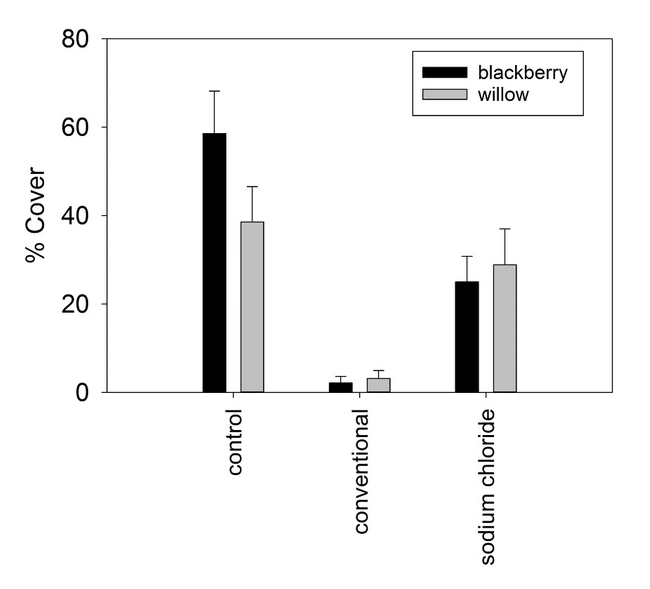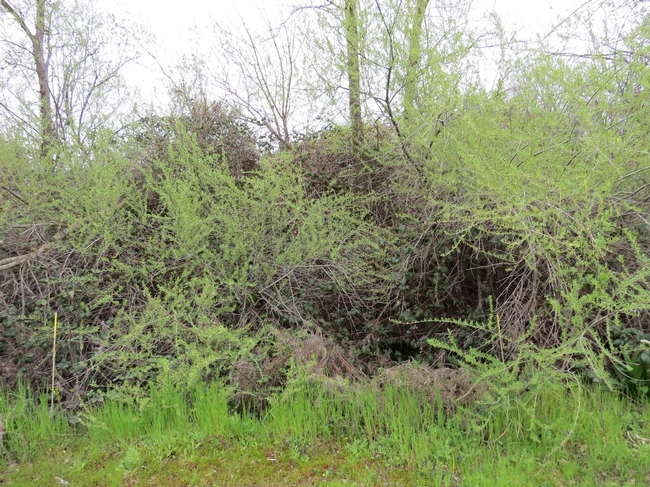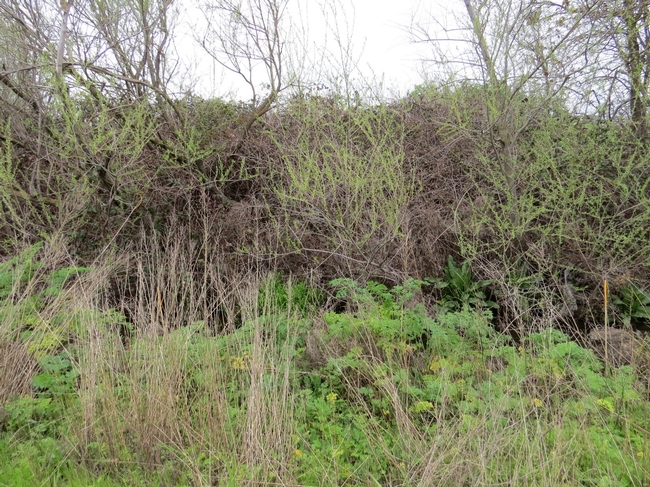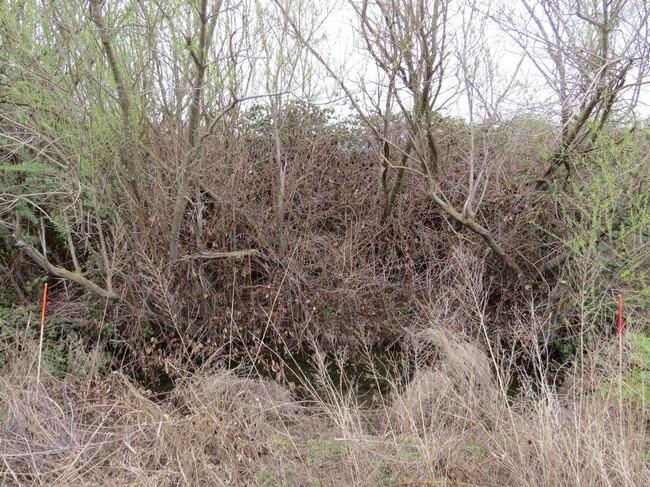Valerie Eviner is a Professor of Ecosystem Management and Restoration in the Department of Plant Sciences at UC Davis.
Himalayan blackberry can be a persistent weed, particularly in riparian settings. A number of conventional herbicide treatments are effective in its control, but in many settings, there is pressure to decrease the use of conventional herbicides and find alternative control methods. To assess whether the organic herbicide ADIOS (sodium chloride) could provide blackberry control, we collaborated with Putah Creek Riparian Reserve to implement the following treatments:
- No spray control
- Conventional herbicide (mix of 2% Aquamaster Roundup and 1.5% Garlon 3A)
- ADIOS in a 1:1 mixture
The spraying occurred in January 2019, purposely timed for when willow is dormant, but blackberry is susceptible to herbicide. Herbicide was applied using a gas powered pump sprayer with a 50 gallon tank pulled by a quad, with a standard hose and spray gun. A blue dye was added to ensure full foliar coverage during application. Plots were 3 linear meters along the canal-bank, with at least a 1 meter buffer between plots. Treatments were replicated 7 times.
Two months after treatment, the conventional herbicide virtually eliminated blackberry, while sodium chloride decreased its cover by 50%. However, sodium chloride did not affect the cover of willow, while the conventional herbicide greatly decreased it (see figure and photos below).

Photos: Two months after herbicide applications, control plots had abundant willow and blackberry (Photo 1), while ADIOS treated plots had minimal blackberry and emerging willow (Photo 2), while in conventionally treated plots, most woody vegetation was dead (Photo 3).



Unfortunately, by 3 months after treatment, the blackberry almost entirely recovered in the ADIOS treatment. When measured 15 months after treatment, willow cover was still lower in conventionally treated plots, despite the fact that they were sprayed at a time to minimize impacts on willow. Also at this time, there were no impacts of treatment on soil salinity, showing that at least one application of ADIOS does not have long-term effects on soil salinity.
One-time application of ADIOS provided extremely short-term control of blackberry, which is similar to many studies of organic herbicides, which suggest that repeated applications may be necessary to achieve weed control.